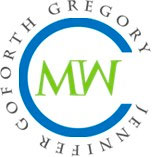Guest Post by Robin Warshaw: 9 Tips for Writing for Nonprofits
 Note from Jennifer: I’ve gotten a number of questions recently from writers that want to write for nonprofits, hospitals and universities. These are fantastic content marketing clients, but they are outside of my niche. So I asked fellow writer Robin Warshaw to share her tips. She writes primarily for for nonprofits, associations, hospitals and medical/health professions schools.
Note from Jennifer: I’ve gotten a number of questions recently from writers that want to write for nonprofits, hospitals and universities. These are fantastic content marketing clients, but they are outside of my niche. So I asked fellow writer Robin Warshaw to share her tips. She writes primarily for for nonprofits, associations, hospitals and medical/health professions schools.
Writing for nonprofit organizations can be, well, profitable. You can find work from charities, educational, arts and social welfare organizations, institutions, advocacy groups and others. By showing you understand their goals and fill their needs, you can develop long-term relationships with these clients.
Nonprofits use external writers for everything from web content, blogs and profiles to reports, articles, white papers, brochures, grant writing, social media messaging and marketing or development materials.
If you have one or more specialty areas (medicine, personal finance, conservation, technology, etc.), start your search by looking for nonprofits doing work in those fields. My first nonprofit assignment came from a large foundation involved in funding social and health concerns, two subjects I write about. I then began pitching to hospitals, other foundations and disease-specific charities.
Tips for success:
- Many states and larger metropolitan areas have associations for nonprofit groups, such as this one. You can use these to find organizations in your area that are a good fit for you.
- Read through the nonprofit’s website before reaching out. It pays to understand which staff person is in charge of what. My contacts are usually in the communications or publications departments, but may also be in marketing or development.
- Use LinkedIn to find prospects and organizations in groups related by professional interests. After connecting, my thank-you includes the names of a few of my nonprofit clients, a link to my portfolio and website, and a direct statement that I’d like to help their organization with its writing needs. I send email LOIs for contacts outside of LI.
- Size matters. Look for nonprofits that are strong local, regional or national organizations. Avoid those being run mainly by one individual on a personal mission.
- Speaking of personal missions, if you already volunteer for a nonprofit should you pitch them for paying work? Your volunteer experience might help you land a client elsewhere but it’s harder to negotiate with an organization that thinks of you as free labor. That said, if writing is unrelated to your normal volunteer involvement, you might be more successful than a writer who pitches cold.
- Working for nonprofits can sometimes be more emotionally rewarding than other types of professional writing work. Always remember that it’s still work, so bid accordingly, based on your usual rate. You can offer a slightly lower hourly rate or project bid because it’s a nonprofit, if you want to. Just be sure to let them know why you’re doing so. They’ll appreciate it.
- Nonprofits that are 501(c)(3) organizations must file a 990 report with the IRS. Seeing this financial picture can help you negotiate rates. Some organizations post their 990s on their websites or you can use this 990 finder.
- You can get work writing for nonprofits through content agencies, but it often pays lower rates, with little wiggle room for negotiating. You’ll get the best rate—plus have the prospect of building a long-term relationship—by dealing directly with the nonprofit.
- When writing for nonprofits, the mission matters, so understand what that is and keep it in mind as you write. What seems most interesting or important to you might not be for the client. Also:
- Many nonprofits don’t expect or want writers to come up with story ideas. Start by pitching yourself and your experience.
- Learn the language. Nonprofits have words they prefer to use. Some groups call service recipients “clients” but for others it’s “patients.” The nonprofit may have a style guide, but keep a cheat sheet of all organization-specific word quirks.
- Your work may be subject to various reviews and approvals. Before starting, clarify how the process will go, who will direct it and if you are expected to get approvals. Make sure your rate fits the time that will be consumed.
What tips do you have for writing for nonprofits? Any questions for Robin?


Thank you so much Jennifer and Robin – this is so helpful. If you’re happy to share Robin, I would love to learn a little more about how you land your work – e.g. what percent would you say is referral/word of mouth? Do you still send out a lot of LOIs? Is a lot repeat clients? Thanks!
Thanks, Lindy! I get most work these days by referral and from established and continuing clients. But I do still send LOIs selectively (see #3 above). You never know when something might connect–often long after you first contact someone. I gained one client two years after sending an LOI and another, four years after first contacting them. Of course, that means following up after the initial contact. Every three to six months is sufficient, I think, to remind them of who you are and what you can do for them. You can also use a project you’ve recently completed as a reason for re-contacting LOI recipients with an update.
Thanks so much for your reply Robin. That’s a great tip to follow up with an update of the projects you’ve been working on. And a great reminder that freelancing is always about playing the long game and being patient!
Useful post; thank you. As someone who’s worked full-time, contract and freelance with charities and non-profits, I’d say your advice is spot on.
However, I will point out that not everyone reading this blog is American though so information about taxes, U.S. states, hyper-local data etc., is not relevant to everyone.
I’m glad you found it helpful! Yes, we do have readers from Canada and other parts of the world. Not all information that both me and guest posters includes is going to be relevant to everyone. But since the majority of my readers are US based writers, I wanted to make sure that we covered this information since it’s an important part of writing for nonprofits.
Solid advice and very timely. Thanks!
I’ve been running into nonpofits being interested, and then falling silent once I quote my usual per-post blog pricing range. Have you found this a lot? What’s the best method for pricing for nonprofits?
How extensive are the conversations you have with potential clients before you quote your price range?
Talk about things beyond length and frequency–talk about their aim for the posts, who the audience will be, where sources will come from, how many interviews each post will need, the review process, etc. That helps the client stop and think about what’s involved in creating each 300- or 800- or however-many-words post. It lets them see the value of each one as meaningful content, not as simply a block of type on a screen. Writing is not typing. It is planning, researching, reporting, thinking, writing and rewriting before you ever send the piece to your client.
If the silence occurs during a phone conversation, after finding out as much information about the work as possible, you can simply ask, “Do you have a budget for this project?” Some people may simply be on a fishing expedition. Others will have a set idea of what they want to pay. If their planned budget is significantly below your rate, there’s no harm done. No amount of negotiation will turn that into a project you’ll feel good about taking on. Remember, you may be writing for nonprofits, but you’re not a volunteer and you need to earn what you’re worth. You can offer a slight discount if you want to but make it a modest cut–and tell them it’s because they are a nonprofit.